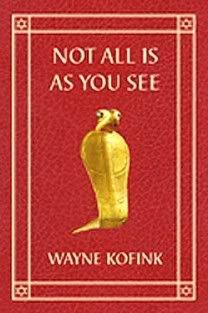MORE BOOKS -- POSTMODERNISM
A

The Cestello Annunciation, Sandro Botticelli
Friday, the First Week in Advent
Friday, the First Week in Advent
More books, but this is going to be a lot heavier than the last. I’ll start by observing that there have been a lot of changes in my also 60 years in this world. Technology, of course, has been a major change, but there is a whole change in world-view or spirit or ethos or something. I’ve seen it in terms of religion. I had always thought the church would go on pretty much as I knew it as a kid, but that just isn’t true. The church I knew is pretty much a relic of pre-historic times and I am one of the dinosaurs becoming extinct with it. For a while I thought maybe the mega-church models with their contemporary worship would be the wave of the future, but now I’m convinced that they are a passing fancy.
A year ago I started reading about the emerging church movement. I think they are on to something even though I’d have a lot of trouble fitting in to it. This year I’ve been trying to get at the roots of the problem so I can understand what might need to happen even if I can’t provide the right leadership. At the least, I don’t want to be in the way. The heart of the issue seems to be Post-modernism.” This is a weaselly sort of term that embraces a variety of things that are only loosely tied together. As the word implies, post-modernism is what follows modernism. I think the meaning is clearest in architecture which is where I first encountered the term.
Modern architecture is all those steel, concrete, and glass structures that fill our cities. The Sears Tower is modern, for example. The World Trade Center was modern. This is machine architecture, stripped down to essentials, no ornament. Purely rational architecture: “Form follows function,” but the stuff is so uniform, you can’t tell what any given building might be used for. Each floor looks the same. There is no top, just an end to the building. Sometimes you can’t even figure out where the door is. The post-modern architects wanted to humanize architecture again, put back form, color, ornament, human scale and so forth. And sometimes just have fun. Philip Johnson, one of the leading modernists suddenly to a post modern turn in his design for the AT&T building with a top like a broken pediment so it looks like a huge Chippendale cabinet.
I follow the architectural development, but post-modernism goes far beyond that. So I picked up a neat little book, Postmodernism 101: A First Course for the Curious Christian. by Heath White. White begins by tracing two worldviews that preceded postmodernism. The pre-modern world was hierarchical, based on authority. The modern worldview challenged authority and was based on reason. Postmodernism rejects reason as a solution to things. Of course, it’s all a lot more complicated than that, but I’m only putting out a few ideas from some books.
Here’s where I find myself in two camps. I don’t think pure rationalism has worked. Marxism was supposedly scientific, rational approach, but it was a disaster. Freud thought religion would disappear because reason would replace it. It didn’t happen. I think the fault of modernism was the assumption that people would actually become more rational. So far, they haven’t. But I am not convinced that we can abandon logic just because people don’t use it. I am not ready to abandon a pursuit of The Truth.
Moving along, one Christian who has tried to cope with the postmodern worldview is Brian McLaren who sets his agenda with his book A Generous Orthodoxy. Maybe the subtitle gives the whole substance of the book: Why I am a missional, evangelical, post/Protestant, liberal/conservative, mystical/poetic, Biblical, charismatic/contemplative, Fundamentalist/Calvinist, Anabaptist/Anglican, Methodist, catholic, green, incarnational, depressed-yet-hopeful, emergent, unfinished Christian. Well, there you have it. Like many of the emergents of which he is a spiritual father, McLaren came out of a conservative evangelical tradition who rejected the narrow aspect of evangelicalism while still embracing it’s fervor and commitment. Emergents draw on a whole range of Christian sources from traditional Catholicism to radical Anabaptist thought.
I think the is a lot to be said for McLaren’s point of view. I am aware that many evangelicals condemn him outright for deviating from rigid doctrinal positions. Roman Catholics and Eastern Orthodox will find him too firmly rooted in the Protestant traditions. Mainline Protestants would be puzzled what to think of him because his communities don’t look like traditional churches. I appreciate McLaren’s approach to renewing Christianity, yet I wonder long term where it will lead. I know only too well that the history of Christianity has had a number of reform movements that only end up producing another denomination.
This emerging church response leads in a very unexpected direction–the new monasticism, which happens also to be a the title of a book by Jonathan Wilson-Hartgrove and the subject of one of the sections I attended at the annual meeting. The new monasticism is movement where people live together in community, although almost always it is a mixed community of men and women, married couples with children and celibates. In the last 50 years there has been a rebirth of traditional monastic communities among Protestants especially Anglicans and Lutherans, but now also Methodists. The most notable one is probably Taizé. (One of my unread books is A Community Called Taizé by Jason Brian Santos published by Intervarsity Press, a surprising source until you understand the new monasticism. More recent have been the new intentional communities that borrow elements of traditional monasticism as well as an emphasis on caring for the poor, but are rooted in the evangelical tradition. Many of the members of these communities come from very conservative backgrounds, but like McLaren have moved away from that tradition. Their inspiration lies in the various Mennonite, Amish, and Hutterite communities, the ideas of Dietrich Bonhoeffer's Life Together, in addition to Benedictine and Franciscan practice.
The most intriguing group that I have read about is the Community of the Transfiguration located in Australia. In the book of the same name Paul R. Dekar lays out the story and ethos of what can only be described of as a Baptist Monastery. I look at the pictures of the group in a setting that looks like an Anglican Benedictine establishment, but the theology and church affiliation is Baptist. It's hard for me to imagine such a thing in the United States, at least in the Southern Baptist tradition.
I have a couple more books on the same subject which I have not yet read:Inhabiting the Church: Biblical Wisdom for a New Monasticism by John Stock, Tim Otto, and Jonathan Wilson-Hartgrove; and School(s) for Conversion: 12 Marks of a New Monasticism edited by The Rutba House (one of the new monastic communities in Durham, NC).
One of the papers I heard and one of the books mentioned Alasdair MacIntyre's book After Virture. The superficial link to the new monasticism lies in the final sentence of the book: "We are waiting not for Godot but for another–doubtless very different–St. Benedict. But the true link is much more substantial, for MacIntyre set out 25 years ago to propose an ethic for the postmodern world. He insists that the modernists attempts to develop rational ethics. Neither utilitarian ethics (where morality is judged on the basis of the result of an act) nor deontological ethics (where morality is judged on the basis of performing one's duty) are adequate. Instead he believes we must return to a pre-modernist ethic based in virtue, the approach taken by Aristotle. I admit this is a difficult book for me to plow through (and I have a B.A in Philosophy). I'm rather out of practice studying complex philosophical theories and have had to consult other works to make sure I have some grasp of the background. The subject is of great interest to me. As I have written in other blogs, I believe we have lost a great deal by not teaching virtue to our young people. I want to see, however, how complete an ethical theory MacIntyre is able to develop. The great short coming of virtue-based ethics is that it doesn't tell you how to resolve conflicts between virtues. It's much the same problem as the conflict of duties in a deontological system or the difficulty in arriving at a satisfactory calculus for measuring non-moral good in a utilitarian system. My personal inclination is some system that combines duty and virtue. I am much more skeptical of utilitarianism because of its "end justifies the means" approach.
What's next? I have five books on my "to read pretty soon" list. Here are the titles. Silence, Solitude, Simplicity: A Hermit's Love Affair with a Noisy, Crowded, and Complicated World; Finding Sanctuary: Monastic Steps for Everyday Life; Christianity for the Rest of Us: How the Neighborhood Church is Transforming the Faith; Spiritual Formation as if the Church Mattered: Growing in Christ through Community; and The Mystical Way of Evangelism: A Contemplative Vision for Christian Outreach.
A blessed Advent to you. May the Lord bless you on your journey and greet you on your arrival.
Wayne
3272
Labels: Emerging Church, New Monasticism, Postmodernism, virtue
small.png)


